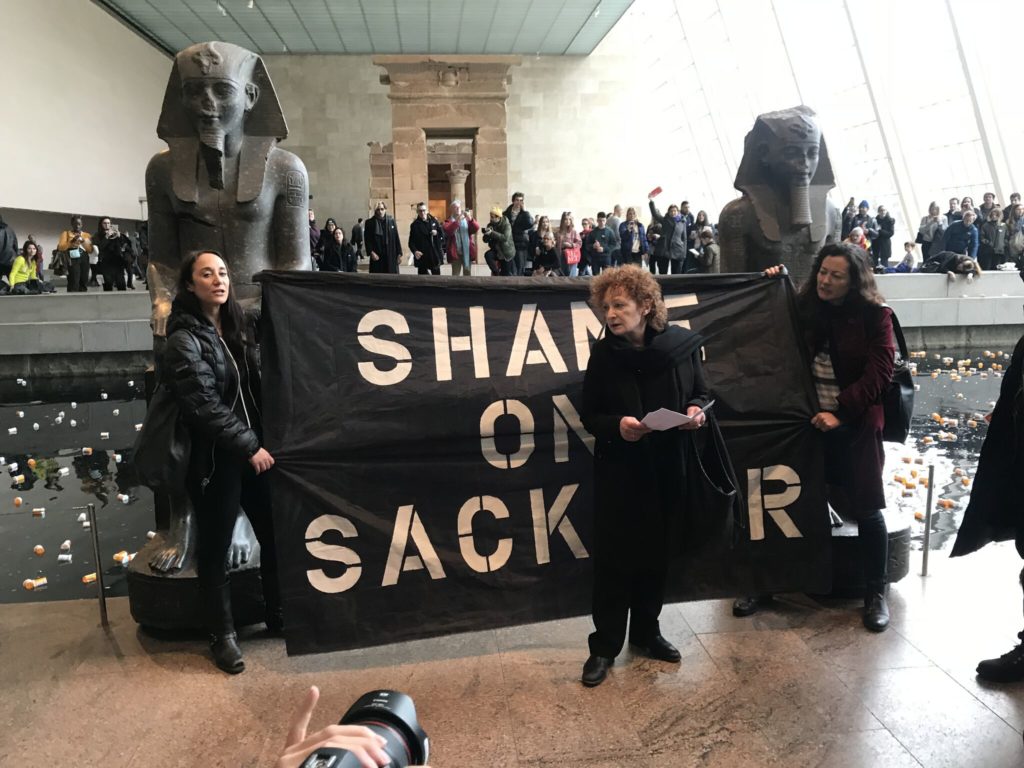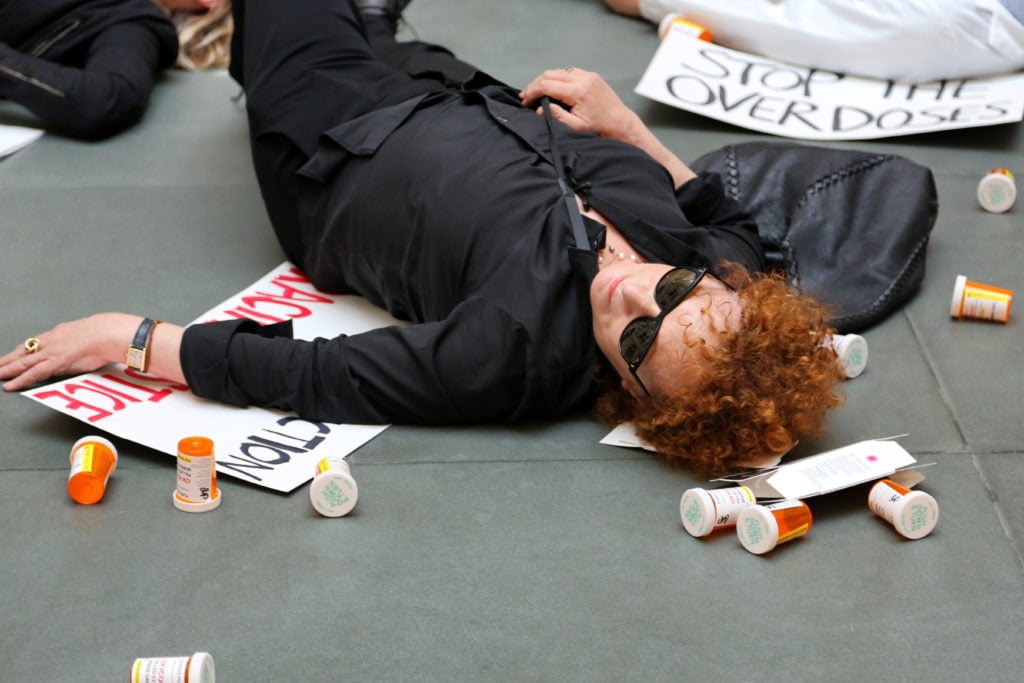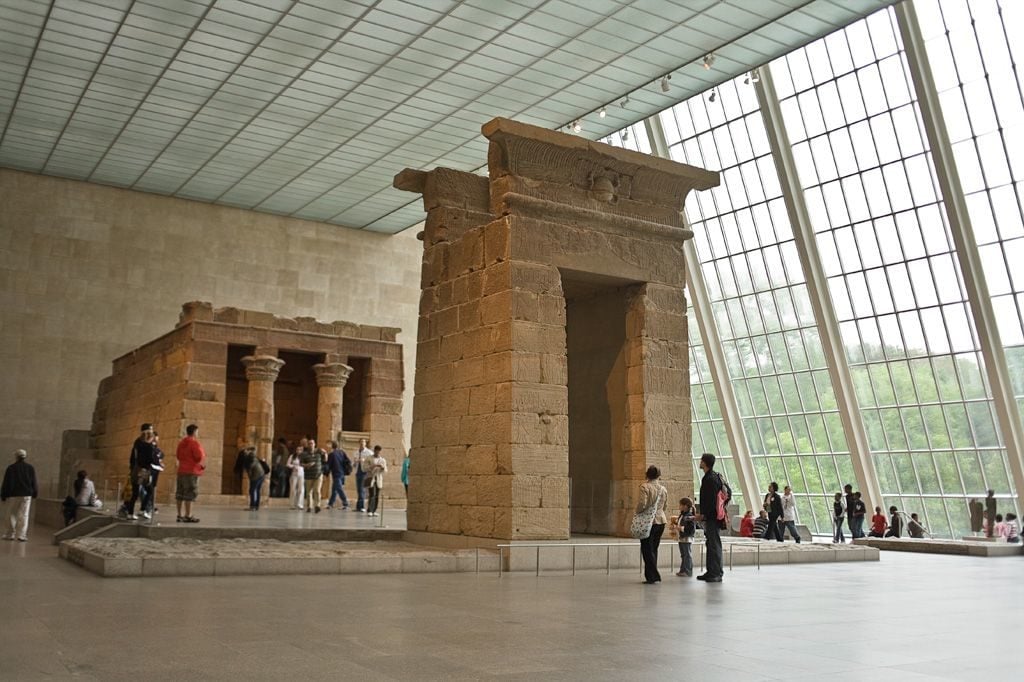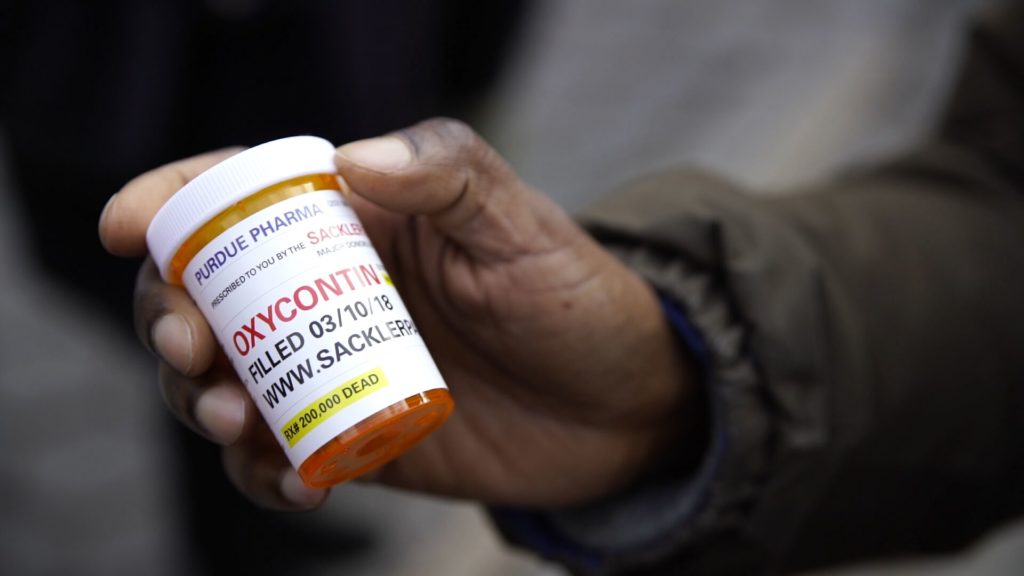Politics
Nan Goldin’s Activist Group Escalates Its War Against the Sacklers With an Open Call to Action at the Met
The artist's direct-action group has made a public appeal for anyone to join them at a protest at the museum tomorrow, February 9.

The artist's direct-action group has made a public appeal for anyone to join them at a protest at the museum tomorrow, February 9.

Kate Brown

Nan Goldin and the opioid-crisis activist group she founded, Sackler P.A.I.N., are planning a large-scale protest outside the Metropolitan Museum of Art in New York tomorrow, February 9 at 7.p.m.—and they have called on the public to join in.
In an escalation of their campaign against museums that have benefited from the Sacklers’ philanthropy, the group now wants everyone to join Saturday’s demonstration.
The activist-artist appealed for New Yorkers to join the protest via her Instagram account today.
“We’ve been knocking on their doors for a year and not a single museum has denounced the Sacklers, taken down their name, or publicly refused their funding,” Goldin said in her Instagram post. “Time’s up.”
The Met did not respond immediately to a request for comment.
Goldin, the founder of P.A.I.N. (Prescription Addiction Intervention Now), hopes to increase pressure on the museum, which recently announced that it was reviewing its fundraising policy amid calls for members of the Sackler family to take responsibility for the ongoing opioid crisis in the US.
This is the first open call the group has made since it was founded in January last year. Usually, its direct actions are covert operations that take institutions by surprise. P.A.I.N. has staged multiple protests so far, including a “die-in” at the Met, and similar demonstrations at the Harvard Art Museums and the Freer-Sackler Gallery in Washington, DC.

Nan Goldin staging a ‘die-in’ at the Harvard Art Museums. Photo: TW Collins.
Speaking to artnet News, a spokesperson for the group said it was encouraged by the Met’s recent statement that it would review its fundraising policy. In it, Daniel Weiss, the museum’s president and chief executive, acknowledged the Sacklers’ support of the institution but hinted that the museum might change its gift policy.
“The Sackler family has been connected with the Met for more than a half century,” he said. “The family is a large extended group and their support of the Met began decades before the opioid crisis. The Met is currently engaging in a further review of our detailed gift acceptance policies, and we will have more to report in due course.”
P.A.I.N.’s spokesperson said: “To hear from the Met, of all places, felt huge for us.” Now, the group wants to make sure the museum follows through and distances itself from the Sacklers.
The group wants the Met to disavow the Sackler name (there is currently a Sackler Wing at the museum) and to refuse further gifts from the family. In an interview last September with artnet News, Goldin said she wanted to use her voice and power within the art world to draw attention to the “dark money” behind major institutions.

The Temple of Dendur in the Sackler Wing of the Metropolitan Museum of Art. Photo courtesy of the Met.
Recent events have put a renewed spotlight on some members of the Sackler dynasty, whose alleged involvement in promoting and marketing the painkiller OxyContin is at the heart of the opioid crisis in the US.
The opioid crisis has claimed more than 200,000 lives since OxyContin went on sale in 1996. The pharmaceuticals brand behind the medicine, Purdue Pharma, was established by Sackler brothers Raymond and Mortimer. Due in part to the sale of the highly addictive drug, the Sacklers have become one of the country’s wealthiest families. Forbes estimated their combined wealth to be around $13 billion in 2016.
Many of the Sackler offspring are active philanthropists and work with museums around the world. The Met is one of many institutions in the US and UK that has a gallery or wing funded by their donations.

P.A.I.N. Bottle. Photo: Thomas Pavia
In January, the City of New York added eight Sackler family members to a $500 million lawsuit to offset costs caused by the opioid crisis. These Sacklers are either on Purdue Pharma’s board of directors or its related entities, or have served on the board since OxyContin was introduced. (These Sacklers are all widows or descendants of either Raymond or Mortimer Sackler.)
Also last month, further court filings in a different lawsuit in Massachusetts revealed internal emails written by former Purdue chairman and president, Richard Sackler, in the mid-1990s, where he says blame should be put on the drug users for the overdoses, calling them “reckless criminals.” Documents also show that Richard Sackler, who is the son of Raymond Sackler, encouraged doctors to prescribe the highest dosage available.
“With the recent news about Richard Sackler, a lot has been revealed,” a spokesperson from P.A.I.N. says. “From the direct quotes from Richard Sackler’s internal emails, we know it really is as bad as we thought it was. The point of these actions is to say that now that we have heard from the horse’s mouth, this is not okay. It is not okay to have the name of a family in your museum that represents this crisis.”
Last March, Goldin and her activist group staged their first direct action at the Met’s Sackler Wing. They threw Oxycontin pill bottles into a large pool and staged a “die-in” by collapsing on the floor en masse after chanting “Sacklers lie, people die.”
Correction: An earlier version of this article misidentified Arthur Sackler as a co-founder of Purdue Pharma. In fact, he held a stake in a related company, Purdue Frederick, and died before Purdue Pharma was founded.